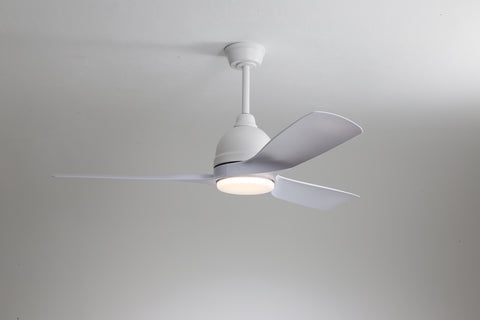When ceiling fans get dusty after a long time, it's time to clean and reinstall them. This article will tell you how to take down a ceiling fan.
1. Turn off the power to the fan circuit at your home’s main breaker box. If you cannot locate it, contact an electrician for help.
2. Use a ladder or stepstool to reach the mounting bracket of the ceiling fan. Unscrew and remove any screws that are holding the fan in place.
3. Carefully lower the fan down until it is within reach. Remove any wiring or cables connected to the fan and store them in an organized fashion.
4. Unscrew and remove the mounting bracket from the ceiling box by removing any screws that hold it in place. The mounting bracket should come out easily once all of the screws are removed.

5. Discard the old fan and mounting bracket and replace them with a new fan/mounting bracket of your choice.
6. Install the new mounting bracket by screwing it into place using the same holes as before. Make sure to check that all screws are tight so that the fan is secure.
7. Reconnect the wiring or cables to the new fan and make sure all connections are secure.
8. Carefully lift the fan into place, inserting it onto the mounting bracket. Secure the fan by tightening any screws that were removed earlier.
9. Turn on power at your home's main breaker box,
10. Test the fan by turning it on and off to make sure it is working properly. If everything checks out, your fan installation is complete! Enjoy the new addition to your home!
How do I install a fan lamp?
Installing a fan lamp is an easy and straightforward process. First, you will need to locate the junction box in the ceiling where the fan is going to be installed. Next, use a drill to put four or five mounting screws into the joists on each side of the junction box, allowing room for the fan motor to fit securely. After the mounting screws are in place, connect the wires from the fan to the house wiring. Make sure you turn off all power to the ceiling fan before connecting any of the wires. Then, attach a wire connector and secure it with electrical tape. Finally, put on the fan blade assembly, secure it with mounting screws, and plug it into an electrical outlet. Once everything is securely connected, you should be able to install the fan lamp onto its mounting bracket. Finally, use a screwdriver to attach the blades and switch on the fan before testing it out with a light bulb. Following these steps will ensure that your fan lamp is installed correctly and safely.

If you have any questions or concerns, please contact a professional electrician for assistance. They can help you with any additional tasks or questions related to the installation process.
Do you need an electrician to remove a ceiling fan?
Most homeowners will not require an electrician to remove a ceiling fan. However, there are times when this type of professional may be helpful. Contact a professional if you notice problems with your ceiling fan wiring as you begin removing your old ceiling fan.
How much does it cost to remove a ceiling fan?
The cost to replace ceiling fan units runs between $100 and $300. This type of job involves using existing wiring and switches to swap out the old fan for a new one. Since it's a more straightforward job, the cost will be lower. If the area needs new wiring, boxes, and switches, it can cost between $300 and $600.
Are ceiling fans hard to replace?
Installing a living room fan with light is relatively simple, especially if the space above is accessible from an attic. However, even when it isn't, the job is still quite doable. Here, we'll show how to replace an old light fixture with a new ceiling fan and light, in a room with no attic above.
Does installing a ceiling fan add value?
They give a room character and its own source of air movement. 42 inch ceiling fan come in a wide range of prices depending on the size, style, and quality of ceiling fan. Adding ceiling fans to rooms like bedrooms, the living room, or family room will add value to your home immediately.
You can now enjoy the new addition to your home! If you need additional help, contact a professional electrician. They will be able to guide you through the installation process and make sure your fan is installed properly.

